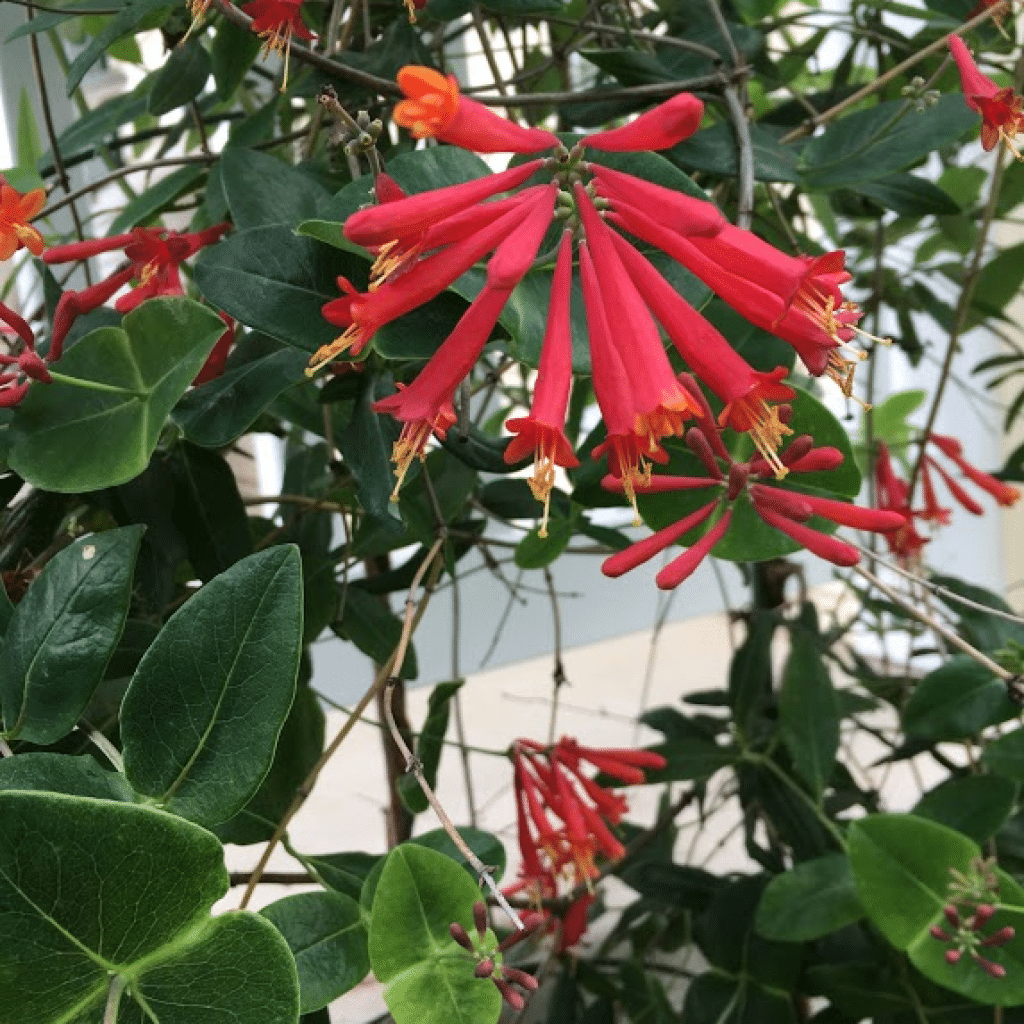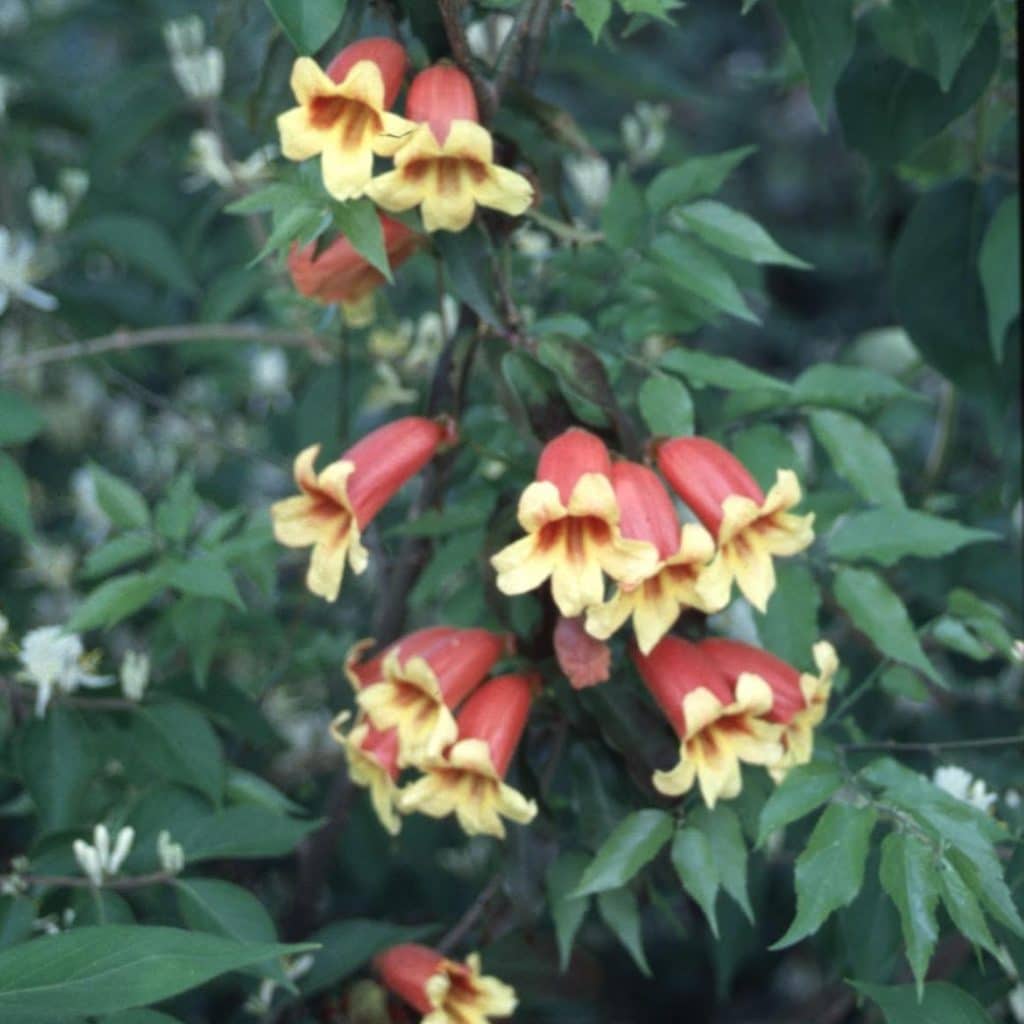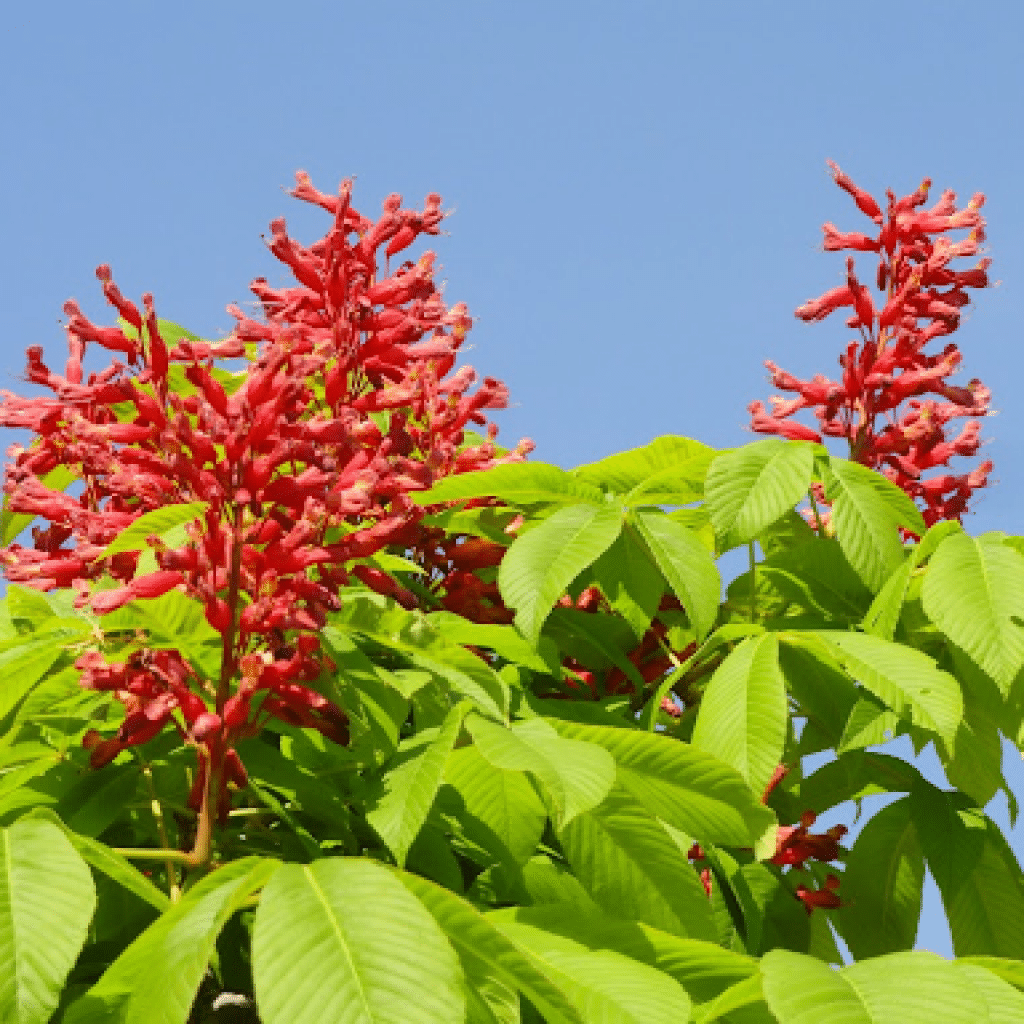5 (More) Native Plant Design in Knoxville for a Beautiful and Functional Garden
Native Design in Knoxville & Your Outdoor Space
I am a firm believer in the cultivation of native plant design here in Knoxville. They require less maintenance and care, and since they’re in their natural habitat, they can yield several benefits and support wildlife in your local area. With that said, I’ll list five more native plants you can use in your backyard if you live here in Knoxville, Tennessee.
1. Blue Flag Iris (Iris versicolor)

The leaves of the Blue flag iris – which is the official state flower of Tennessee – protrude in a sword-like shape (minus the sharpness). They sprout from thick horizontal rootstock and present fibrous roots. The leaves themselves are a bit shorter than the plant.
As a clumping species this plant spreads less than two feet annually and its blue to violet-blue petals sprout from the almost perfectly straight flowering stems. The tri-petalled flowers typically bloom in different colors, usually yellow, green and white.
Care / Maintenance:
Blue flag plants thrive in full sun and may be either grown at the edge of water or in native garden soil.
Use(s):
This iris has many uses, ranging from functional to aesthetic. For example, the flower was viewed as a “good luck” charm to earn more money. However, the flower also presents many practical uses, such as attracting hummingbirds, which will delight the most avid birdwatchers. It is also fairly fragrant which is a plus in my view.
2. Threadleaf Bluestar (Amsonia hubrichtii) in Knoxville, TN

Also known as Arkansas bluestar, this plant grows abundantly and comfortably here in Tennessee. They’re known for their dainty, willowy foliage and their star-like flowers in the spring that burst forth in a pale blue tint. They grow fast, reaching an adult height of three feet. If the plant kingdom had a “chameleon,” the blue star would be it. In the summer, its leaves stay light green, and in the fall, they turn a vibrant golden-yellow. They’re very hardy as well and their foliage lasts most of the winter season.
Care / Maintenance
Once established, threadleaf bluestar requires very little maintenance: place in a location that receives at least 4 hours of sun and where the soil is moist but well drained. These, as many other native perennials of Tennessee, may divided as they grow to encourage healthy plants and prolific blooming.
Use(s):
Threadleaf blue stars have numerous benefits that would appeal to gardeners of all sorts. First and foremost, these flowers attract butterflies and are bee friendly – the latter makes these great plants facilitators of pollination. They’re also ideal for landscaping itself because they can be used for borders and are great for garden decor, whether that means mass planting or along a border.
3. Coral Honeysuckle – Lonicera sempervirens

These perennial vines bloom in abundance throughout the Eastern and Southern states. The vine is thin and climbing and grow stems up to 20 inches long. The flowers it produces are shaped like a trumpet, yellow on the inside and red on the outside and are the number one species favored by hummingbirds. The leaves form a unique ellipse surrounding the stem.
Care / Maintenance
Coral honeysuckle need to grow on a fence trellis or other supporting structure on which to cling since it lacks tendrils. They may also grow well in large containers. The coral honeysuckle is a hardy vine that can survive the harshness of winter. They’re can even tolerate full sun, but they also do well in the partial shade. I recommend that you give them exposure to both light and some late day shade.
Use(s):
Coral honeysuckle is one of the most versatile vines you can find. They’re fantastic for attracting wildlife, including goldfinches, hummingbirds, butterflies, and bees.
They also possess medicinal properties – you can use honeysuckle to provide relief for asthma symptoms, bee stings, sore throats, or coughing. This is also a great plant for a child’s garden as the flowers when plucked from the stem have a gentle sweet candy-like taste when you give the narrow end a little sip.
4. Crossvine (Bignonia capreolata)

Care / Maintenance
Since this is also a vine like the previous plant, it will require little care once established. Unlike the Coral Honeysuckle, crossvine does indeed have tendrils which allow it to climb without support. ((You may want to keep a check on it if adjacent to wood siding).
Uses
One of the features I love about crossvine is that it is evergreen allowing it to be seen in the winter. The trumpet shaped flowers however, come out a bit too early for this to be a lure for hummingbirds. The red and yellow flowers are striking. There are also non-native varieties (Nativars) such as “Tangerine Beauty” which produce an attractive peach / orange bloom.
5. Red Buckeye (Aesculus pavia)

Red buckeye make great additions to gardens for a variety of reasons. These plants may be considered to be large shrubs or small trees making them appropriately sized for most home landscapes and gardens. They also stand out – their flowers are brilliantly red in the spring, which creates a nice color contrast in a typically green garden. The red buckeye again blooms with various textures. Its foliage remains dark green throughout the season, while its flowers are ruby-red and spikey during early to mid-spring.
Care / Maintenance
This shrub grows well in full sun and full shade, making it a species of choice for gardeners looking for a generally low maintenance plant. Their survival isn’t too dependent on soil type, and they’re usually tolerant of pollutants in urban settings. Nevertheless, they do better when planted in a sheltered location. One tip for growing red buckeyes is to apply a thick layer of mulch around the root zone, primarily to protect it from winter’s harshness (pine needles or leaf mulch is preferable to shredded hardwood bark).
Uses
Red buckeyes can serve a multitude of roles. They’re great for creating visual contrasts and vibrancy in your landscape since their red leaves “pop” like fireworks. They’re also helpful for attracting wildlife, namely, hummingbirds but also squirrels. As with most native species, Native Americans used many parts of the plant for medicinal purposes. On a lighter note, the fruit (nuts) are buckeyes and are said to bring good luck.
Native Plants & Landscape Architects in Knoxville, TN
I’ve seen many Tennessee landscaping ideas that incorporate exotic plant species to varying degrees of success. Some of my clients have created beautiful gardens out of such species when designing and building their garden. While a healthy garden often utilizes a mixture of different plant species, planting natives has advantages over foreign species. The five species mentioned above thrive quite beautifully here in Tennessee, and I recommend all of you to give them a try. You won’t be disappointed.
Are you stuck with the design process? A residential landscape architect can take your landscape plan to the next level. To be successful means having a professional guide the way and ensure you don’t leave your investment to guesswork.






